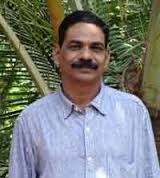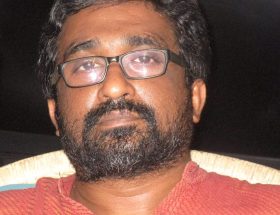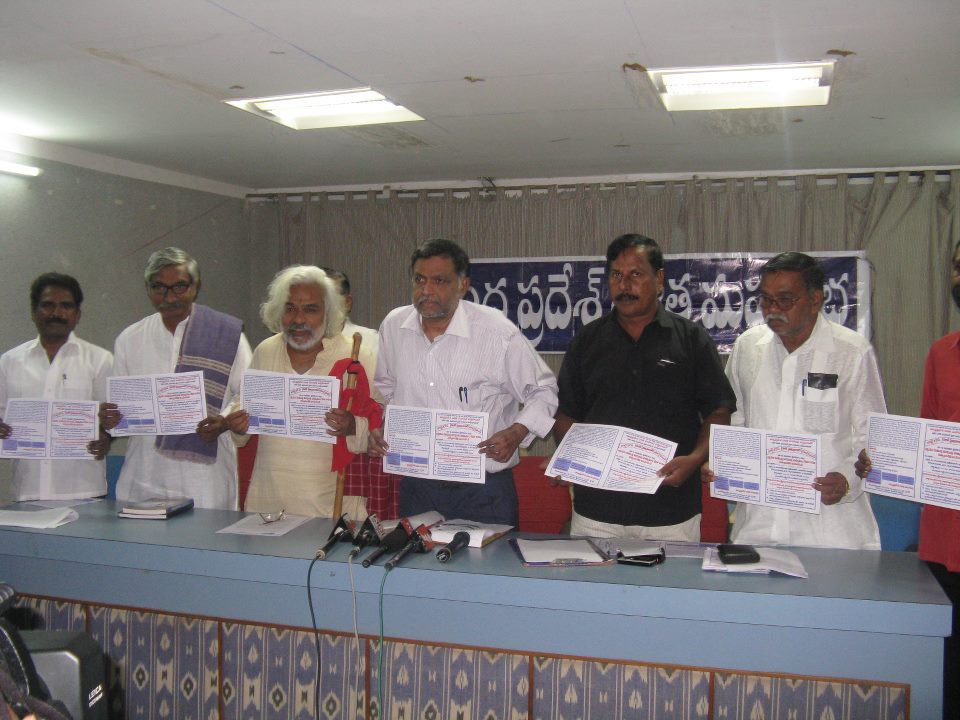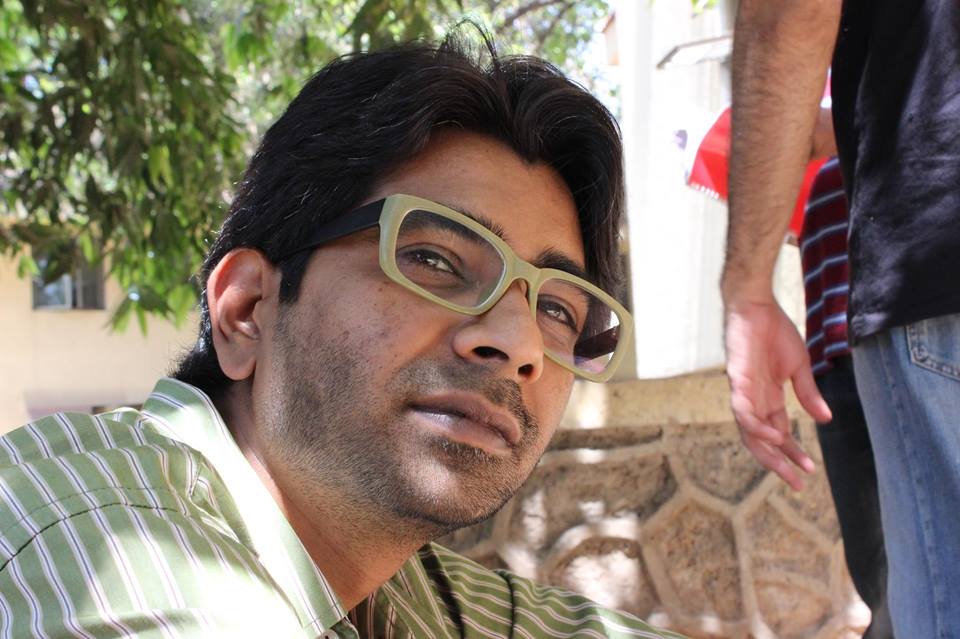KK Baburaj
 Noted Afro-American feminist, Bell Hooks has written an essay titled ‘The Censorship from left and right’. She points out that in American media, dominated by racist Whites, the creative expressions and protests of Blacks face direct and indirect – overt and covert – censorship. Meanwhile, a section among Blacks reproduces the general perception that posits critical Blacks as some form of dangerous zone. Hooks has raised the pivotal point relating to why Blacks, on their own, must remove their fear of critical Black voices along with the censorship/control imposed by White racists.
Noted Afro-American feminist, Bell Hooks has written an essay titled ‘The Censorship from left and right’. She points out that in American media, dominated by racist Whites, the creative expressions and protests of Blacks face direct and indirect – overt and covert – censorship. Meanwhile, a section among Blacks reproduces the general perception that posits critical Blacks as some form of dangerous zone. Hooks has raised the pivotal point relating to why Blacks, on their own, must remove their fear of critical Black voices along with the censorship/control imposed by White racists.
As a writer with a Dalit Bahujan Pro-Feminist Pro-Minority stance, I have experienced censorship from the mainstream media in Kerala and also from the academic and administrative fields. This is in addition to non-recognition as well as general ostracization. I understand this as another form of censorship that Hooks speaks of. However, what I attempt here is not to talk about these acts of censorships but the risks and the hurdles that I have faced as a writer with a critical stance.
Many people qualify me as a Dalit writer or theoretician/thinker. Even if this qualification does not totally encompass my views or opinions I have never felt such a qualification has a condescending effect on me. The reason, I think is because that qualification has befallen on me like a curse name. That means at the time when the word ‘Dalit’ had been reiterated in the public consciousness as a term that had the connotations of caste related narrowness this curse name fell upon me as I had tried to voice the problems of the marginalized people through my activism and writings.
Today ‘Dalit’ is not an accusatory term anymore for writers or thinkers. At least a few among them have gained respectability and recognition through this. But what disturbs me is the fact that the mainstream media as well as the people who handle power do all what they could in order to ‘normalize’ caste and caste related issues. In this context it is imperative that more and more critical voices come from the Dalit Bahujan, lower castes and women.
Before I had been hailed as a Dalit writer or thinker I had written a few cultural articles/essays in weeklies like ‘Kalakaumudi’. During my student days I had initiated a publishing house named ‘November Books’. While retaining a larger leftist perspective I had translated and published literature from all over the world that maintained the anti-war, anti-racist and anti-patriarchal stance. After my education I joined a Dalit group, helped to run their magazine and was instrumental in organizing several cultural programs and seminars in its platform. I write this here to underline the fact that before I started appearing in the mainstream media I had been pursuing my organizational and academic interests actively.
Dalit Writing: An Independent Discourse or a Supplement?
It was in 1997, that the illustrious literary magazine, Bhashaposhini published a Dalit Special issue. When a commemorative meeting was called by the Ambedakarite Students’ Union at the MG University, Kottayam to pay tribute to the departed literary activist and theoretician Dr. V.C. Harris, one of the speakers on the occasion Dr. T.M. Jesudasan pointed out that it was on Dr. Harris’ insistence that Bhashaposhini took up the task of bringing out that issue. Besides, he also said that there were certain ‘exclusions’ in that edition. Many people maintain that particular issue of Bhashaposhini as the event that gave visibility to the Dalit discourses that had gained social traction only in the marginalized zones till then. But a closer look reveals that it had deliberately tried to deflect the new narratives and formations that would have disturbed the mainstream narratives in vogue. Instead of spending time on the list of the excluded it is imperative to debate the politics of such exclusion.
As a result of new subjectivities that emerged from the lower caste peoples who had tried to reclaim the values of social revolution and parted ways with ideologies like Marxism and started showing their affinities towards the ideology shaped by the subaltern thinkers such as Dr. B.R. Ambedkar, a Dalit discourse gained traction in Kerala. However, what the Bhashaposhini Dalit Special issue tried to do was the maintenance of a continuity of the simple logic of the old hierarchical caste arguments by completely doing away with the dynamics generated by the formation of a new political society. It is important to notice that it could not create a space within the mainstream and would remain only as a supplement. This Dalit literary supplement did not even touch ‘the Hindu aesthetics based on Rasa theory,’ opined many a reader in the next issue of the magazine.
Following the Bhashaposhini Dalit special the Sahitya Akademi publication, ‘Sahityalokam’ and the Malayalam edition of ‘India Today’ published their own Dalit literary specials. It seemed that the categorization of Dalit recognized by such publications had indeed irritated the main(stream) writers of that time. It was the (late) Dr. Sukumar Azhikode who came out for the first time against such a categorization saying that it was a faulty move and it would cause a collapse our cultural values. Then came the bigwigs like O.V. Vijayan, T. Padmanabhan and Narendra Prasad who openly went against it. Naturally, the people who have got representational rights through these new special supplements in mainstream should have expressed their views on those contrary opinions and opposition. Instead they chose to keep silent. At the same time the people who openly came out to argue this case answering such doyens as Azhikode to Narendra Prasad arguing that ‘the categories such as Dalit and women writings were part of the historical need of development in literature’, were of those people who had been gloriously excluded from the said special issues.
When such discussions and arguments were going on, I saw some news reports on the views expressed by the famous poet Balachandran Chullikkad who was my close friend and roommate in the Maharajas College Hostel. According to him the categories like Dalit Literature, Women’s Literature etc were absolutely absurd. I published a rejoinder in ‘Sameeksha’ edited by K. Venu. Balachandran replied to it in strong language which I even criticized. With this, Balachandran declared that Dalit ideologues such as Baburaj were betraying themselves by continuing within the Hindu fold and they should be joining Buddhism the way Dr. Ambedkar had done. Balachandran went ahead and converted himself into Buddhism. One of the Marxian critics, E.P. Rajagopalan, who had not been a direct interlocutor in this debate, stated that the Dalit discourse was making people to convert forcefully. I gave a detailed rejoinder to this too through Sameeksha itself.
To put it in a nutshell, those people who had been given representative roles in the Dalit specials decided to be contented with visibility alone and kept themselves away from the debates and the give and take that followed, feigning ‘sanctioned silence’ on it. I became a Dalit monger and cursed writer only because I thought I should break the silence in that context. The first risk that I had faced as a writer was the argument that underlined the position that for a writer to be with the marginalized they should have converted to Buddism and the Dalits who did not do that would naturally get divested of their right to be the interlocutors of the Dalit cause.
If we look at the historical background of Kerala, we would be able to see that massive conversions had taken place only during the colonial modernity and before that. When community formations became a reality during the Renaissance period conversions lost their steam and verve. The social reformation activities taken up by Mahatma Ayyankali, Poykayil Appachan, Pampadi John Joseph, Makti Thangal, the philosophies of Sree Narayana Guru and Sahodaran Ayyappan, the books like ‘Independent Community’ by E Madhavan and the debates conducted by the lower caste groups on the issue of conversion in those days stand evidence to this observation. We cannot reduce the conversion of Dr. Ambedkar into Buddhism as a retaliatory logic or an act of vengeance against the upper castes. Ambedkar comprehended religions, like Gandhi, differently and unlike the western thinkers on the subject. In this matter we need to consider the methodologies that Dr. Ambedkar had employed in analyzing the various base structures of culture that the progressive thinkers generally overlooked. For me Dalit discourse was not confined to the Hindu question. I have never thought that it was a sort of settling scores with either Marxism or Gandhism.
When the Black Literature and the Black interventions, like Feminism, in the social and knowledge spheres became educational disciplines in the western universities they faced strong oppositions from the orthodox academic sections. Referring to these oppositional views C.L.R. James had observed that ‘the cultural constructs by the Blacks in the contemporary times should be seen as a link in the forward movement of the (modern) civilizations”. In the Dalit arguments it is not just the ‘imaginative’ that finds the crucial discursive space but the subjects that handle knowledge and justice too. Therefore it cannot reduce itself into the narratives of a torturous past dominated by the upper castes and the lack of resources in the present times. The prospect of progress of civilization involved with it definitely makes it desirous and full of vitality of richly expressed life.
‘Madhyamam’, a weekly was pushing itself into the mainstream at the time when Sameeksha had collapsed and Kamalram Sajeev, a Sub-Editor with the weekly was ready to accept Dalit subjects for publication. Through this platform I could give answers to those prominent critics like K.P. Appan, V.C. Sreejan, Anand and P.K. Rajasekharan who were opposing the Dalit category. Those debates with many could go beyond being mere elucidations and position themselves as discursive riots that marked a shift in the aesthetic sensibilities.
Noted scholar of Dalit and subaltern histories, Gopal Guru has observed that it was not Gandhi’s ‘service’ (seva) oriented language but the language that embodied the ‘ideology of rebellion’ employed by Dr.Ambedkar that helped in forming the cultural capital of Dalits in modern India. Traditional Dalit writings try to eke out sympathy from others or stand under the shadow of their charity while they resort to the exposure of an interiority that is marked by the complaints against and blaming of the upper castes. From the very beginning I have made efforts to write in a language structurally different from this traditional one. This is where I started facing the second risk in writing along with the organized objections.
The first objection came from the traditional progressives who believed that writers’ duty was only to organize the lower castes living in the leftover lands and colonies full of ‘deprivation and dispossession’ and prepare them for a revolution rather than writing for them (and see their own lives in a different perspective). The meaning of this truism is nothing but that writers like me write completely oblivious of the oppressed existence of their communities and if the minimum balance of revolution is lacking in the account such writings are absolutely useless/futile. Even if those were not for any revolutionary purpose, due to my life in the (Dalit) colonies and left-over plots and the meanderings in the alleys far away from the King’s Ways, I could realize that many a progressive slogan regarding the lower castes was simply absurd.
James Baldwin who had written the path-breaking work, ‘Notes of a Native son’ argued that while opposing the racial discriminations nurtured by the White people and the imperial-chauvinism the Blacks also should undergo necessary transformations. He did not hang on the ‘ignorance’ that the Blacks showed but he warned about the ‘callousness’ that they maintained in understanding the complexities of the contemporary times. In 1984, K.K. Kochu published a booklet titled ‘The Challenges that the Downtrodden Need to Overcome’ by deriving energy from a biography of Mahatma Ayyankali written by T.P. Chentharassery and gaining inspiration from the available research materials along with the oral histories imparted by the elders in such communities. In this work Kochu categorically deconstructs the nationalistic outlook and class perspectives as he relates the caste-sub-caste complex within the Dalit communities, the prevalent tendencies of male domination/chauvinism, mushrooming of organizations and the lack of confidence. For this he uses a critical category called ‘internal blocks’.
Most of the marginalized communities often face the above mentioned internal conflicts. To overcome this, the common cultural capital as mentioned by the progressives wouldn’t be good enough. It is important that the ‘common’ should be deconstructed and exclusive/special lower caste cultural capital should be amassed. I have been trying to develop such a space through my writings and activism. More than the liberal utopian ideals I was inspired by Virginia Woolf’s articulation of ‘a room of one’s own’ (for women-writers) and the descriptions of study rooms and libraries in the ‘Rajagruha’, the home of Dr.Ambedkar as explained in his biography written by Dhananjay Keer.
The opposition that came from the Dalit activists and organization workers also had similarities to that raised by liberal progressives. They raised the objection by demanding that whatever is written by the Dalits or written for the Dalits should have ‘transparency’, ‘clarity’ and ‘simplicity’ as the defining characteristics. Even if their intention with such questions was good the problem with this argument was that they were looking at reading, writing and the cognitive results as mere propaganda materials, which is a mechanical argument in all sense.
Traditional Dalit writings fail in contemporizing the individual, community, different kinds of discriminations, the inner consciousness created by such exclusions and the desires and realizations that spread lies all over these. They heap up as stereotypes as described in ‘the speaking space of the Black’ by Toni Morrison and ‘discursive sphere of castes’ by K. K. Kochu.
We could see in the recent sentimental definitions on the social status of Dalits, slogans, literary thoughts, films and so on the same stereotypes that I have just mentioned above. They only try to prove the indisputable presence of caste doubtlessly. Such objectifications try to say without saying that the Dalits are the natural inheritors of castes. Why does such a situation arise where the head eats its own tail? It is here that, along with the upper caste general consciousness, the traditional Dalit awareness is also forced to reconstruct the ‘absent’ subjects, struggles, applications and names.
Let me elaborate on this a bit more. Even if the caste system connotes a stratified complex of discriminations subjected to the dominance of Brahminical and Upper Caste values, the autonomy that each caste enjoys within its own premises is always alert on preempting the critical voices from within. The traditional Dalit writings which lack the ability in negating this ‘normalizing’ process, such as upper caste literature, become a part of the order/system. What has been invisibilized by such systems and orders, needs to be seen in the Dalit writings and the anti-caste subjects. The Dalit critics of the days when C.Ayyappan was alive used to find out problems with his stories and the matters that were seen as unsuitable for the Dalits in their narratives. Many fail to comprehend the fact that cultural capital is produced or renewed not when one continues to think along with the existing Dalit subjects or the lower caste peoples but when one shifts the focus of his thinking in such matters.
Reclamations and Additions
As historian D.D. Kosambi opined, ‘The roof has collapsed and fallen on historiography’, I have already mentioned that I was an accidental Dalit writer and have taken up that responsibility. I read through all that was available in the name of Dalit literature in those days. I understood that the available literature was inadequate and could not have stood anywhere near the kind of Dalit literatures created in various parts of India or the movements and the resultant literatures produced in the 1960s in America or Africa. The Dalit critics of those days hailed and embraced the savarna romantic works like ‘Randidangazhi’, ‘Thottiyude Makan’, ‘Vazhakkula’and celebrated all those written in the stereotypical style of social realism. As these works failed to deconstruct the mainstream or generate the desire for that I considered only a countable few as Dalit writers. By taking only the necessary inspirations from those I had attempted to interpret the literary imaginations created by writers from non-Dalit backward castes, upper castes and women. I also took up the challenge to make enriching additions to the Dalit discourse of the time.
Western feminism observed the absence of women discourses as a phenomenally ‘great silence’. I had recognized early that similarly in Kerala what existed was a ‘lower caste silence’ and the traditional Dalit writings had methodological deficiencies in marking them out. At the same time, I also realized that this lower caste silence or its introverted stance was carried forward by writers from the Ezhava or other backward castes. I could recognize the continued life of caste or Brahminism beyond such experiential limits by closely reading the works of Sree Narayana Guru, Sahodaran Ayyappan to Kovilan and Pattathuvila Karunakaran. I could trace what was called ‘non-brahminical’ and ‘avarnam’ in their writings and by reclaiming them I realized that the Dalit discourses would get more clarity in historical as well as day to day contexts.
When we try to dissect the important cultural constructs of a historical phase using the subjects/topics of silence, absence and non-presence/invisibility there would be huge ruptures in the general consciousness. This schism widens when one realizes that the ones coming from outside of the mainstream could only record themselves in these ways. What I am trying to present here is the fact that in the coming days Dalit discourses would be remembered not only as the disrupters of the Brahminical and upper caste general consciousness but also as the disrupters of the lower caste consciousness as well that which tries to curl up as its supplement. I believe that one could find linkages of the Indian Dalit literature with the various ‘outcaste literatures’ of the world.
According to Dr. Ambedkar, Indian upper cast media and the public approve of the people who work towards political changes in India and hail them as revolutionaries. Meanwhile those who work towards social change are treated and ostracized as outsiders of history, stubborn and thought corrupters. This hostility is generated mainly because the utopian intoxication experienced by liberal progressives is interrupted and disturbed by the constant reminding of caste and gender by these fighters for social change. The Marxian public consciousness is still too strong to be broken and I wrote about how the narratives/stories of Pattathuvila Karunakaran contain this breaking ability. It was around the topic of ‘exclusion’ that I forwarded a critique on the stories of C. Ayyappan.
It was during the time of these enquiries and explorations that postmodernist discourse raised its hood in the academic circles of Kerala. But I could realize sooner than later that the ones who had the potential to contribute considerably to this field unfortunately never had the ability to shake off their indebtedness for the Marxian theorizing. Therefore my attempt was to read Foucault, Barthes and Derrida first hand. Many people believed that the future course of my writings could have been determined by my Marxian readings as well as the readings in post modernism but the fact is that I let myself to be led by the post 60s resurgence of the subaltern across the world, black feminism, gay-lesbian-queer gender discourses and the visible and invisible manifestations of the subaltern knowledge trajectories that made its indelible presence. This is the topical context of my book, ‘Another Life is Possible’ which has a selection of essays written over a decade.
Once I became active in social media along with the traditional media I could comprehend the ‘other’ better and also could think differently and distinctively about ‘sexuality’ and ‘religiosity’. At the same time I have taken a strict stance against individualism and essentialism.
~
[This article was orginally published in Utharakalam web portal in Malayalam on November 18, 2018.]
~~~
KK Baburaj is a writer, social critic and Dalit activist based in Kerala.
This article was translated from Malayalam by Johny ML.










